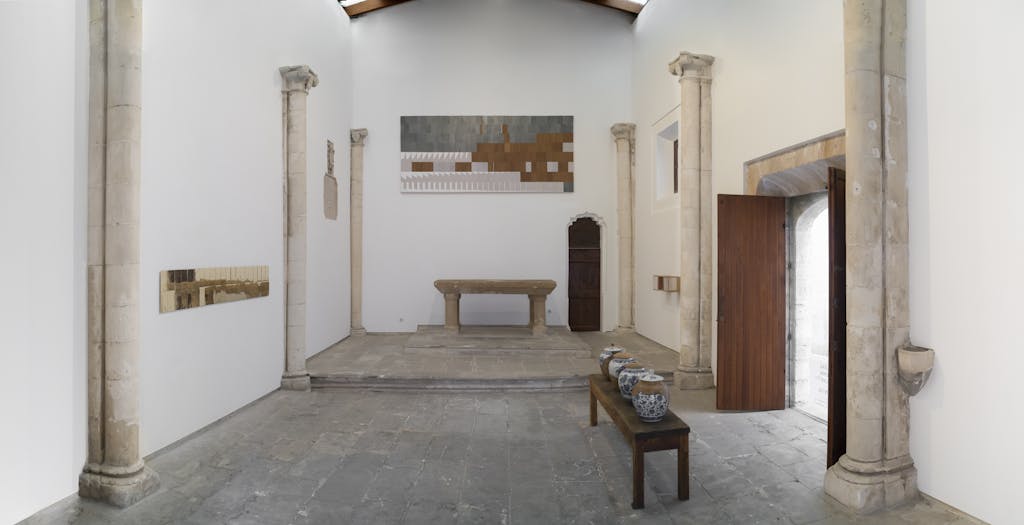Astha Butail works in an array of media such as drawing, assemblage, interactive installation, sculpture and performance. Her art is characterized by her unique approach towards materials. Fascinated by the oral passing of knowledge, Butail has been researching memory and living traditions passed on to generations through the teaching of chants, oral poetry and storytelling. In a one-year multidisciplinary research around the world, she combined aspects of ethnography, spirituality and sociology, traveling extensively to observe and record different memory techniques. This enabled her to draw connections between the Zoroastrian Avesta, the living oral history of Iran, the Jewish Oral Torah, and the Indian oral tradition of Rig Veda, like the inclusion of water prayers and rituals. Most of these diverse traditions use copper vessels to store water, hence Butail’s use of this material, e.g. in the form of copper pipes, such as in “A circular relationship” (2019).
In oral traditions, knowledge is often memorized and transferred using mathematical patterns, which are translated in Butail’s work through geometry and the relation between composite elements to the whole they form part of. Butail has examined the notion of book in interactive installations and its geometry as well as blank book pages are an integral part of her visual vocabulary. As in many of her works, the title of “The book of Night” (2019) references a hymn in one of the books of the Rig Veda.
Sudarshan Shetty has made a name for himself with his bewildering sculptural installations and multi-media works. The choice of materials and their inherent qualities is crucial to Shetty’s artistic process. In his 2018 series of untitled vases he substitutes missing parts of broken Chinese ceramics with pieces of teak wood. This wood typical of India is collected by the artist on markets and mostly stems from torn down houses in Mumbai. Thus, these works silently continue to carry the stories that these buildings witnessed. Through the juxtaposition of natural and artificial materials, Shetty explores ideas of real and fake, old and new, function and meaning. In his recent wall work “As far as the Forest is” (2019) he complements the missing horns of wooden trophies of Indian cattle with transparent acrylic, as if to return lost honor to India’s holy animal, whose protection has become a political issue in the country.
In his multifaceted approach, Sunil Padwal focuses on life conditions in one of today’s most densely populated cities. Using objects found in his surroundings and assembling various materials – abandoned in the rush of modernity – Padwal blurs the borders between different media. The result translates into overlapping themes and non-linear narratives that correspond to the operating principle of our memory. In his recent series “Lining an archive” (2019) Padwal places drawings on archival envelops or on collaged pages torn from books into antique frames. Through his choice of motives, he seems to withdraw into the secured space inside private homes to which the table lamps, armchairs, and family photos allude. Like grass blades making their way through the cracks in a city’s pavement, these are unremarkable, easily overseen objects of daily life. Staged by the artist as representations of bygone eras and past urban lives, they can also function as the viewers’ vehicles to connect to their own personal memories. Like this, the found materials and impressions from restless megacities lead into an inner journey of each individual.
